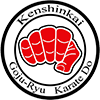


The people of the Ryuku Islands what is now Okinawa lived in a time were self-defense was a daily task. Their need for self-defense motivated them to research, invent and developed over several centuries various ways to protect themselves.
The policy of banning weapons in 1477 by the King Sho Shin and later re-enforced by the invasion of the Shimazu clan in 1609 are factors that furthered the development of unarmed combat techniques and strategy.
This development also included influences from cultures and areas of China as Okinawa enjoyed trade with the mainland . To-de as it was known was an indigenous fighting method with Chinese Kenpo influences is what produced the Karate known today.
Early styles were generalized by the cities that they emerged from like:
Each area and its teachers had particular, techniques, Kata and principles that distinguished their local version of “te” from others which most of these were taught and practiced under ground.
In this period the weapons-based system known today as Kobudo also developed and flourished because of the same restrictions on weapons. Farmers walking with a nunchaku, sai, tonfa or a bo were not seen as walking with a weapon as these were originally farm tools that they learned to use as weapons.
To-de was introduced to Japan in the early 1920’s when the Japanese Ministry of Education invited Gichin Funakoshi to give a Karate demonstration in Tokyo. Karate was later introduced to the USA in the early 1940’s more or less than one generation later.
There where other prominent teachers responsible for the development of Karate in Japan such as Chojun Miyagi, Kenwa Mabuni, Moto Choki and others.
It was in Japan not Okinawa where Modern Karate’s final development happened. This was lead by Gichin Funakoshi (Shoto-Kan) considered the father of modern Karate-Do.
To-De became Kara-te which originally meant “Chinese Hands” the Kanji Kara (唐) and the Kanji Te (手)
Through the efforts of Gichin Funakoshi the meaning of “Kara-te” was changed by changing the Kanji “Kara” with a Kanji that sounded the same but meant something completely different.
Changing the Kanji “Kara” (唐) “Chinese Hands” to the Kanji “Kara”(空) meaning “empty hands”.
He also combined the principles of Zen and Karate and he added the suffix Do to Karate. Karate now baptized with the idea of Zen is known as “Karate-Do”.
Karate an Okinawan indigenous art that originally meant Chinese hands and now with the meaning changed to empty hands and the suffix “Do” added to it is now a Japanese Martial Art (Bu-Do).
In a broader sense to search for truth by calming your thoughts and clearing your mind through the practice of a physical martial art.
The “nothingness“(mu) of Zen Buddhism, It should be note that Zen is not a religion; it is a philosophy of life a system of thought.
Karate-Do is one of the youngest BuDo arts with a history of 90 years.
Budo styles:
In this period Karate also adopted the white uniform know today as Karate-gi and the colored belt ranking system that is recognized with it.
Both of these innovations were originated by Jigoro Kano the founder of Judo who was one of the men that was consulted by Funakoshi in his efforts to modernize Karate.
Today modern Karate-Do is practiced world wide and is one of the most recognized martial arts.
WKF “World Karate Federation” is recognized by the IOC “International Olympic Committe” as the governing body of sport Karate. The WKF recognizes the following major styles of Karate-Do:
ShotoKan
Goju-Ryu
Shito-Ryu
Wado-ryu
These are the four major systems of Karate world wide, and the Kata from these systems are the bases for other Styles of Karate.
Goju-Ryu Kata are now practiced by other systems that have recognized their value. Katas like Seipai, Kururunfa and Suparenpei are in the forefront of word Karate competition.